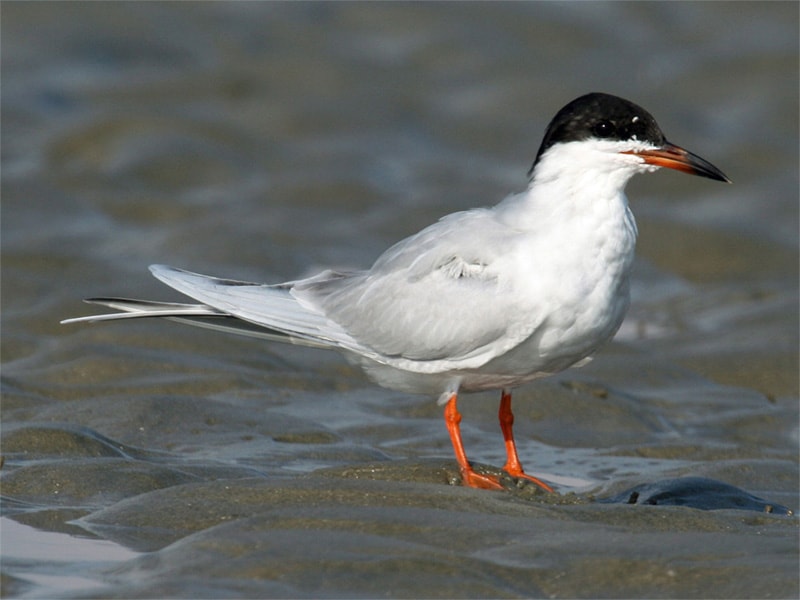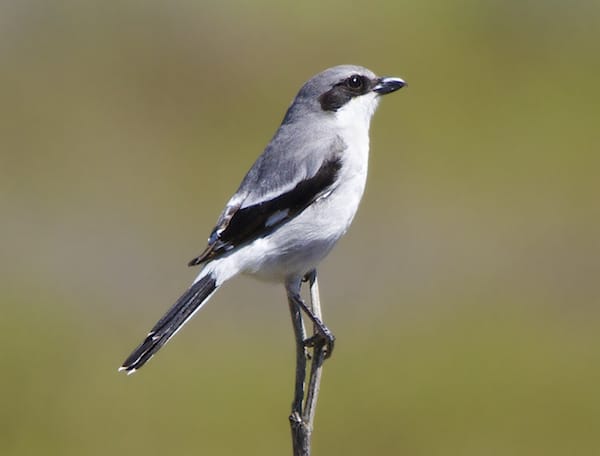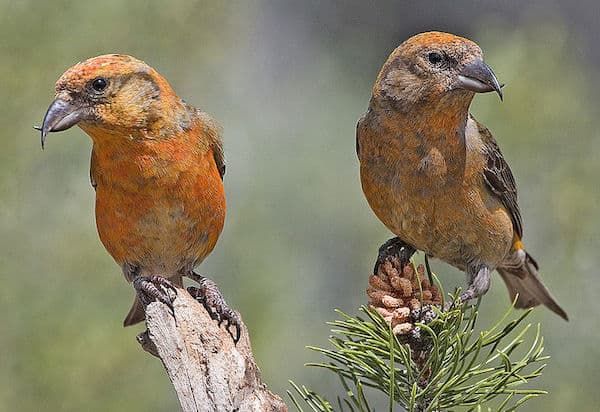Perhaps the best field mark for identifying Forster’s tern is its silvery white upperwing highlights. It can take a few seconds of watching and at least reasonably favorable light for you to pick up the contrast of bright silvery primaries against the pale gray of much of the rest of the wing, but once you see it, it’s obvious and quite different from the basically smooth, even dorsal color presented by our other terns.
Except for spring or early summer adults in perfect breeding, or alternate, plumage, all Forster’s terns show sizable black patches around their eyes, giving them a sort of raccoon or “Lone Ranger” look. But remember that all our terns have black around the eyes. The real difference is that in the Forster’s the black does not meet across the nape, leaving us with that memorable mask.
The Forster’s tern’s bill is proportionately long and large, though still within a range that would be termed medium, and black most of the year. In breeding season, it’s black tipped, like the common tern’s, but the colorful base is much more orange and less red than is the common’s.
Forster’s terns nest in widely scattered colonies in marshes. Its calls include a hoarse kyarr, also kit or kuit.
Listen to a Forster’s Tern:




